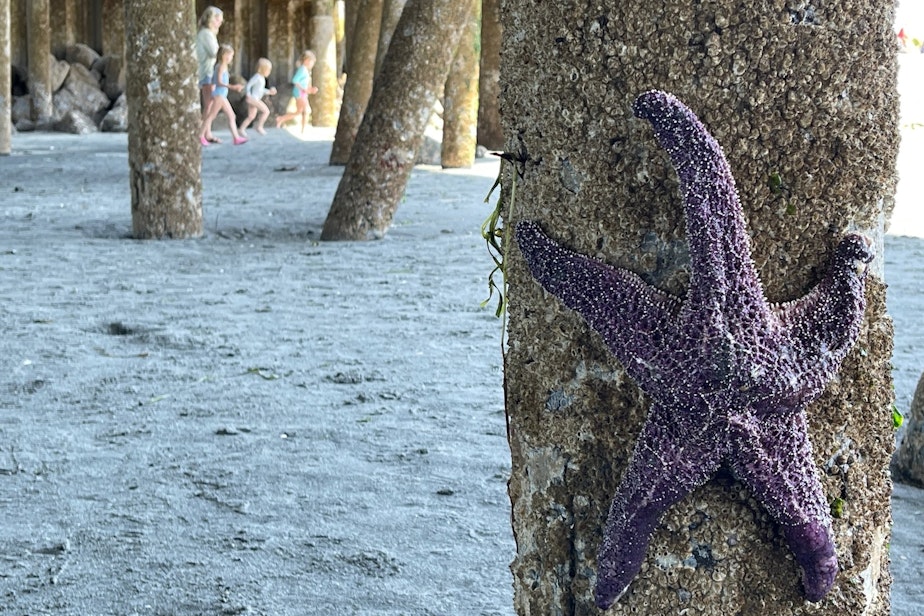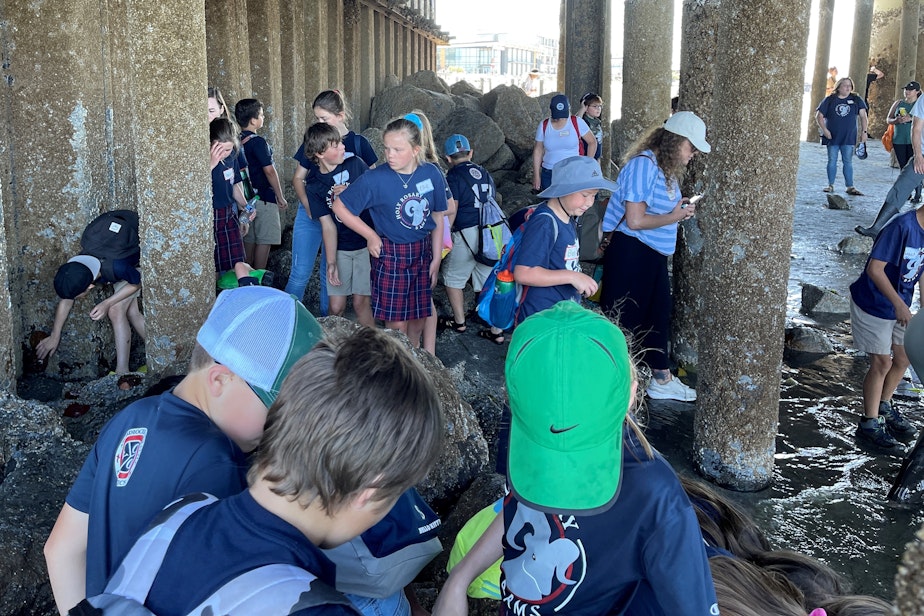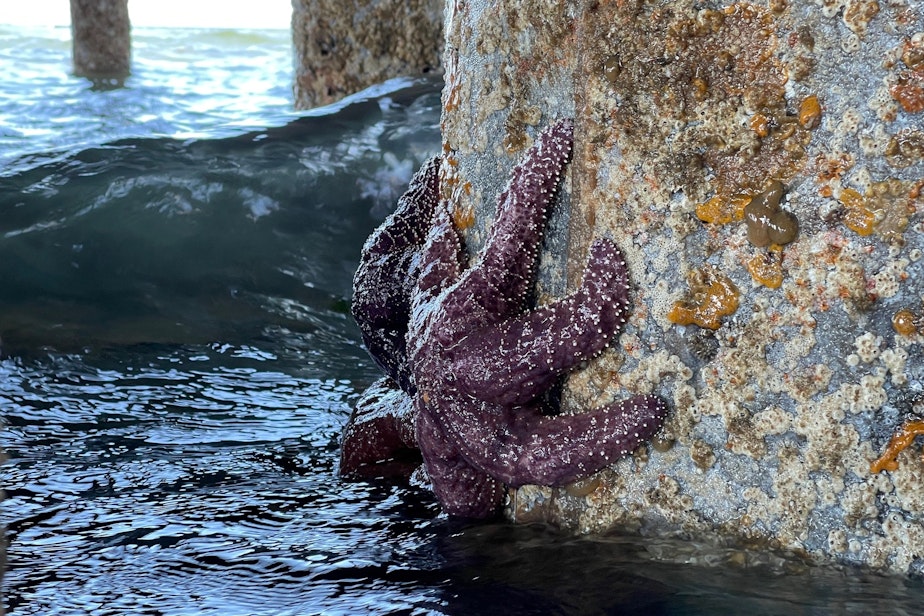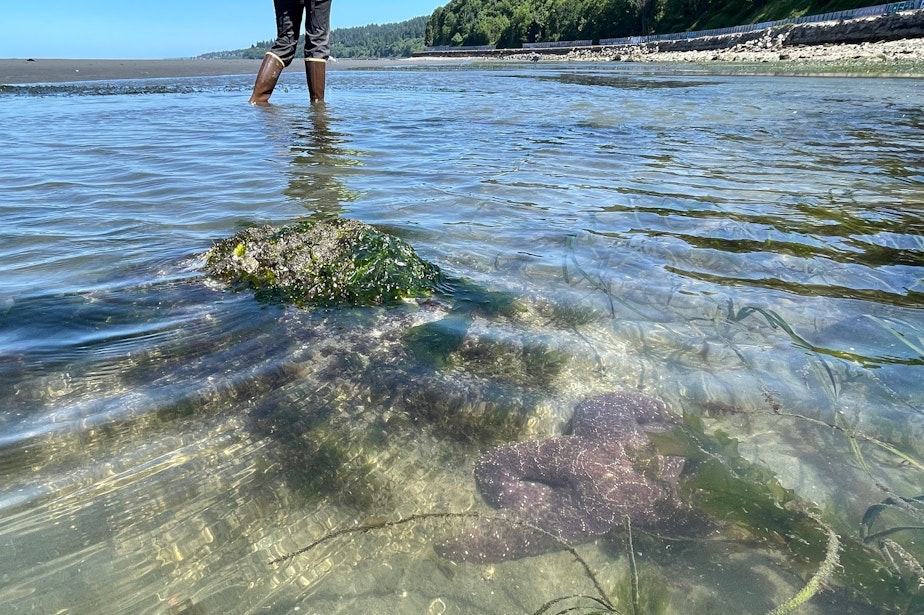Signs of recovery after world’s worst underwater pandemic

Researchers say they’re seeing signs of recovery in a species that fell victim to the world’s worst underwater pandemic: the ochre sea star, Pisaster ochraceus.
Ochre star populations along parts of the West Coast appear to be bouncing back from the Pisaster disaster.
On a recent low tide in June, adults and children marveled at the fat, purple stars clinging to the underside of the Washington State Ferries dock in Edmonds.
“Starfish! Starfish!” one student on a field trip from Edmonds’ Holy Rosary School shouted.
“Look at that starfish!” another chimed in as a gaggle of their peers clambered over slippery boulders for a better view of the dinner-plate-sized creatures at the water’s edge.

“They're about as charismatic as an invertebrate gets,” Olympic National Park biologist Steve Fradkin said.
Beyond its charisma, the ochre star is, or was, a dominant predator of tidepools from Alaska to Baja.
University of Washington biologist Robert Paine came up with the concept of a “keystone species” in 1966 after observing how the presence or absence of ochre stars in Makah Bay profoundly reshaped the ecosystems they hunt in.
For the past decade, the once-dominant ochre star has been one of the species hit hardest by the sea star wasting disease, which has turned the arms of 20 species to goo.
Fradkin recently finished a week of monitoring ochre stars and other tidepool creatures during the low tides of June on the Olympic coast, where he and colleagues first reported the mysterious sea star wasting disease a decade ago.
“The population has been rebounding,” Fradkin said. “It's still not to where it was, but we're not losing a lot of organisms.”
“And more importantly, we saw very few instances of sea star wasting disease,” Fradkin said.

“At our sites on the Oregon coast, the purple [ochre] star has largely recovered and in some cases even overshot the previous densities,” Oregon State University biologist Bruce Menge said by email. “Many are large enough to resume eating larger prey.”
“Ochre star populations are doing pretty well in BC right now,” University of British Columbia biologist Christopher Harley said by email. “There are lots of them around Vancouver, and it is encouraging to see some big ones.”
RELATED: Scientists race to rescue world’s fastest sea star from oblivion
Sea stars begin life as free-floating larvae and settle or “recruit” to the sea floor after a few weeks.
“These populations can only recover if babies recruit to the sites,” biologist Melissa Miner with the University of California, Santa Cruz said by email.
She said Oregon and Northern California are seeing the best levels of recruitment of young sea stars, with a mixed bag in Washington’s Salish Sea, and almost no recruitment in Southern California.
The Edmonds ferry dock is one of a handful of long-term monitoring sites in Washington being studied by volunteer scientists. Retired biologist Michael Kyte says he counted 32 ochre stars, all healthy, clinging to the Edmonds dock in May, about a third as many as were found there in 2015.
While ochre stars have recovered in some areas, another species, the 20-armed sunflower star, has not bounced back at all from the wasting disease outbreak. Having lost 90% of its global population to the disease, the sunflower star is now a candidate for protection under the Endangered Species Act.
A decade after its discovery, the cause of the wasting disease is still unknown.
RELATED: 14 baby sea stars are tiny bundles of hope for their critically endangered species
“As a scientist, it's troubling to not be able to have a definitive answer for what is causing it,” Fradkin said.
Scientists have learned that the outbreaks would get worse when water temperatures increased.
Between El Niño ocean conditions and global warming, ocean temperatures are expected to hit record highs this summer.





